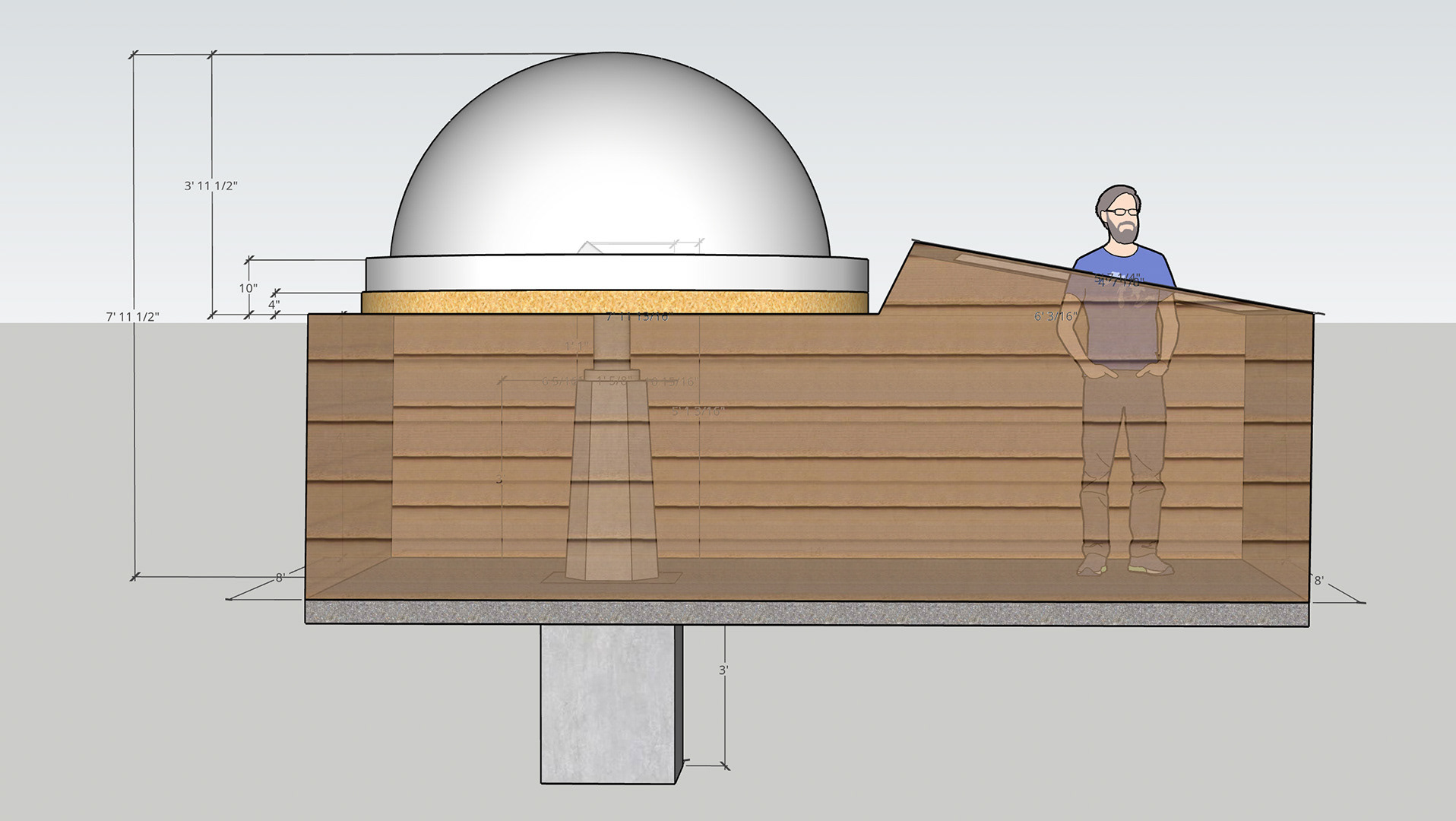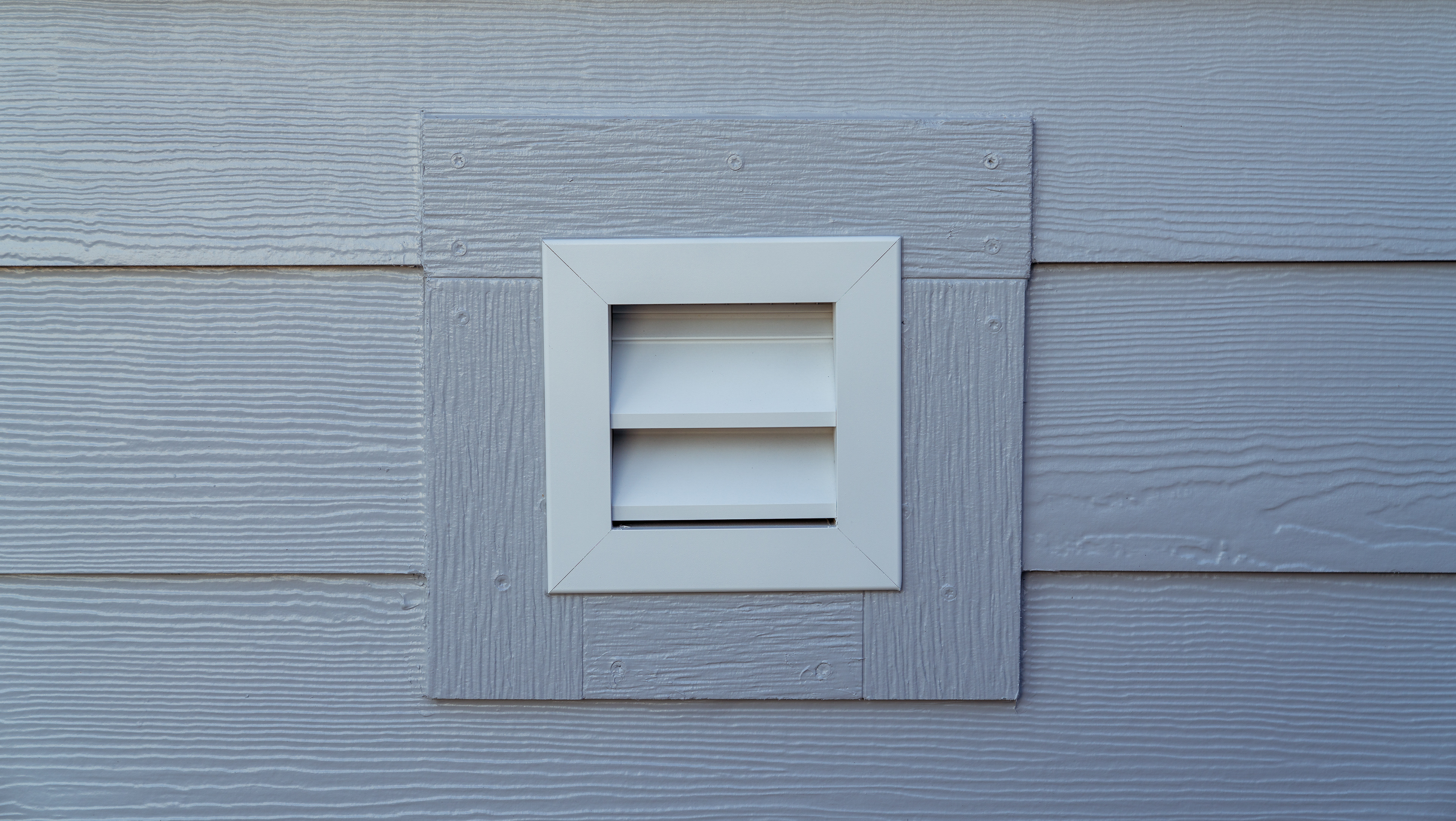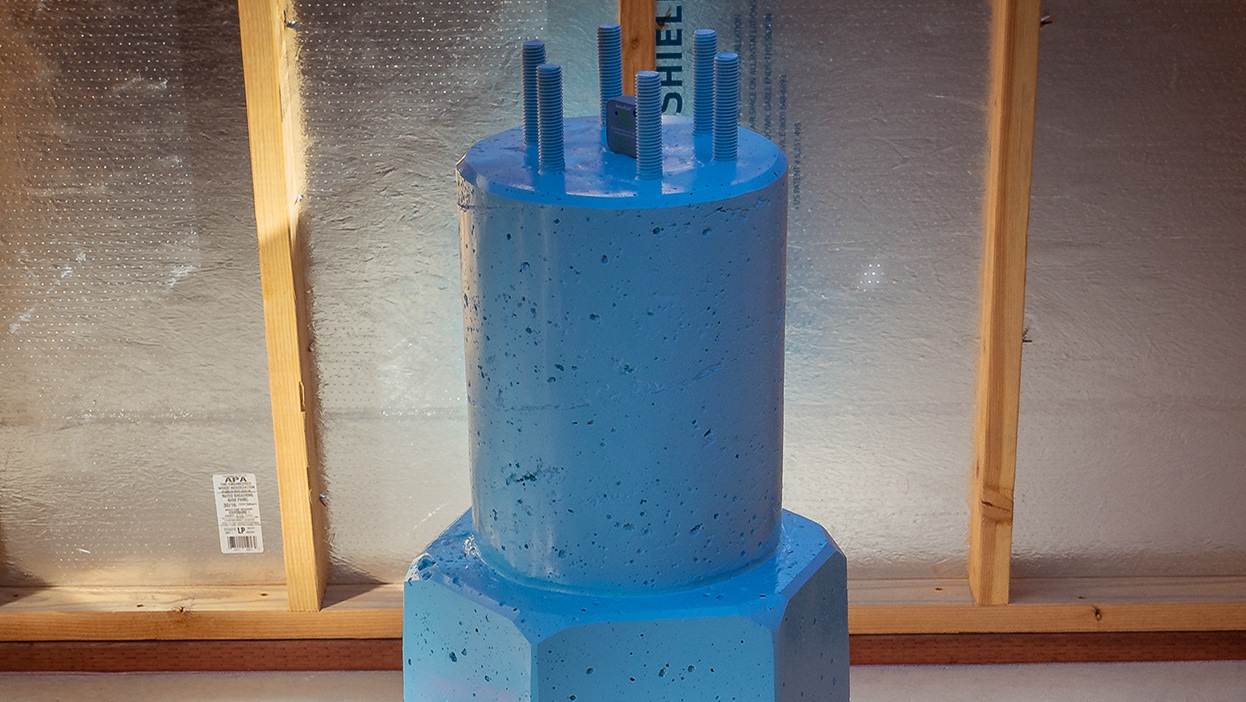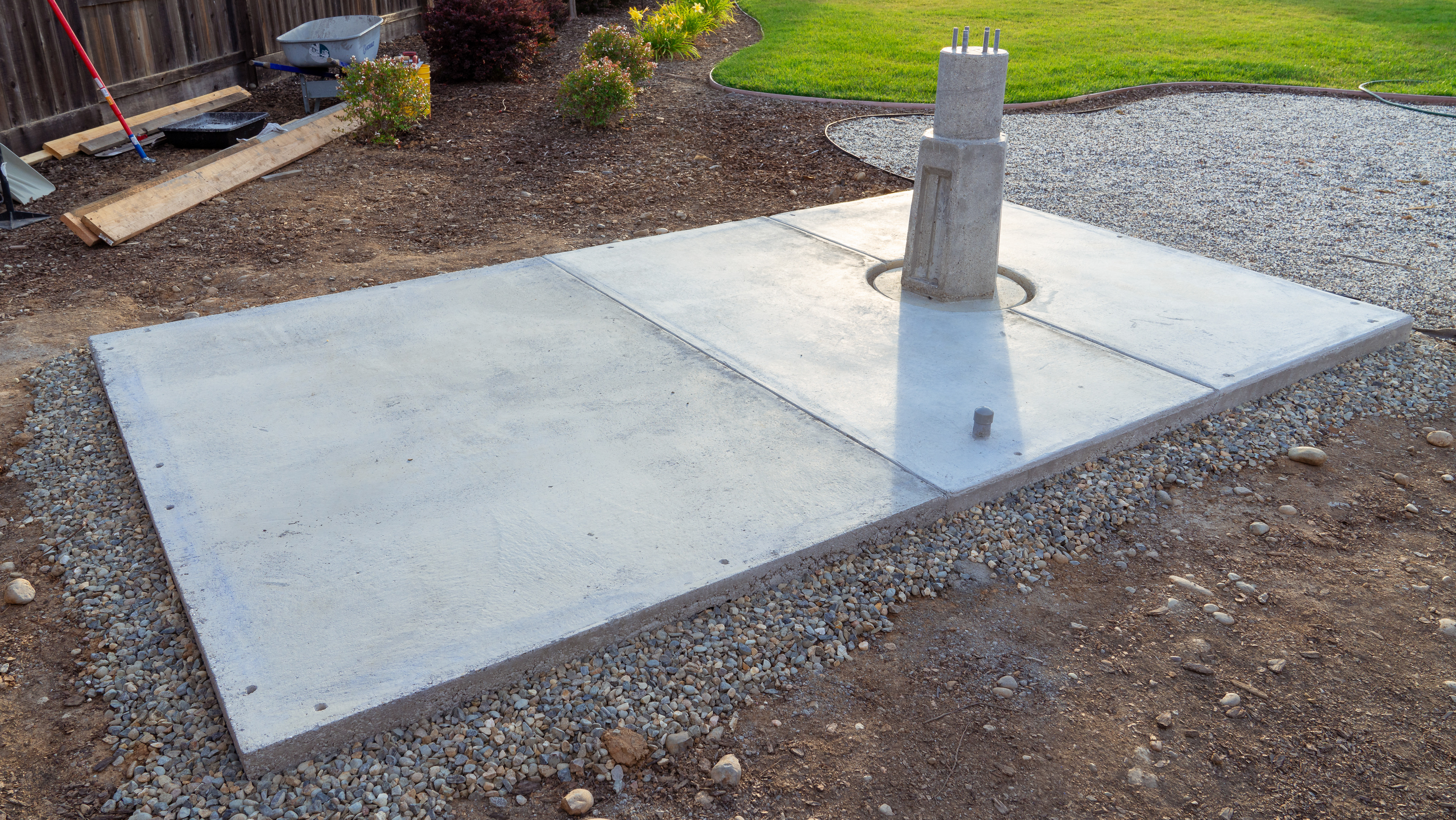I'm not an electrician any more than I'm a carpenter. Putting together a solar power kit seems simple in theory, but when you start trying to figure the proper capacities for all of the components involved, things quickly become complicated for a novice. I won't bother going in too much detail here on how I've arrived at the final setup, and instead will share just a high level summary below.
The power rack/housing was constructed from leftover 2"x4"'s and a 2'x4' plywood sheet. I had it sanded and painted. I then laid out all of the components and attached them with screws and then drilled holes to run all the wires so I can hide them behind the panel. Batteries are stored in the lower section of the rack and have plenty of access and ventilation.
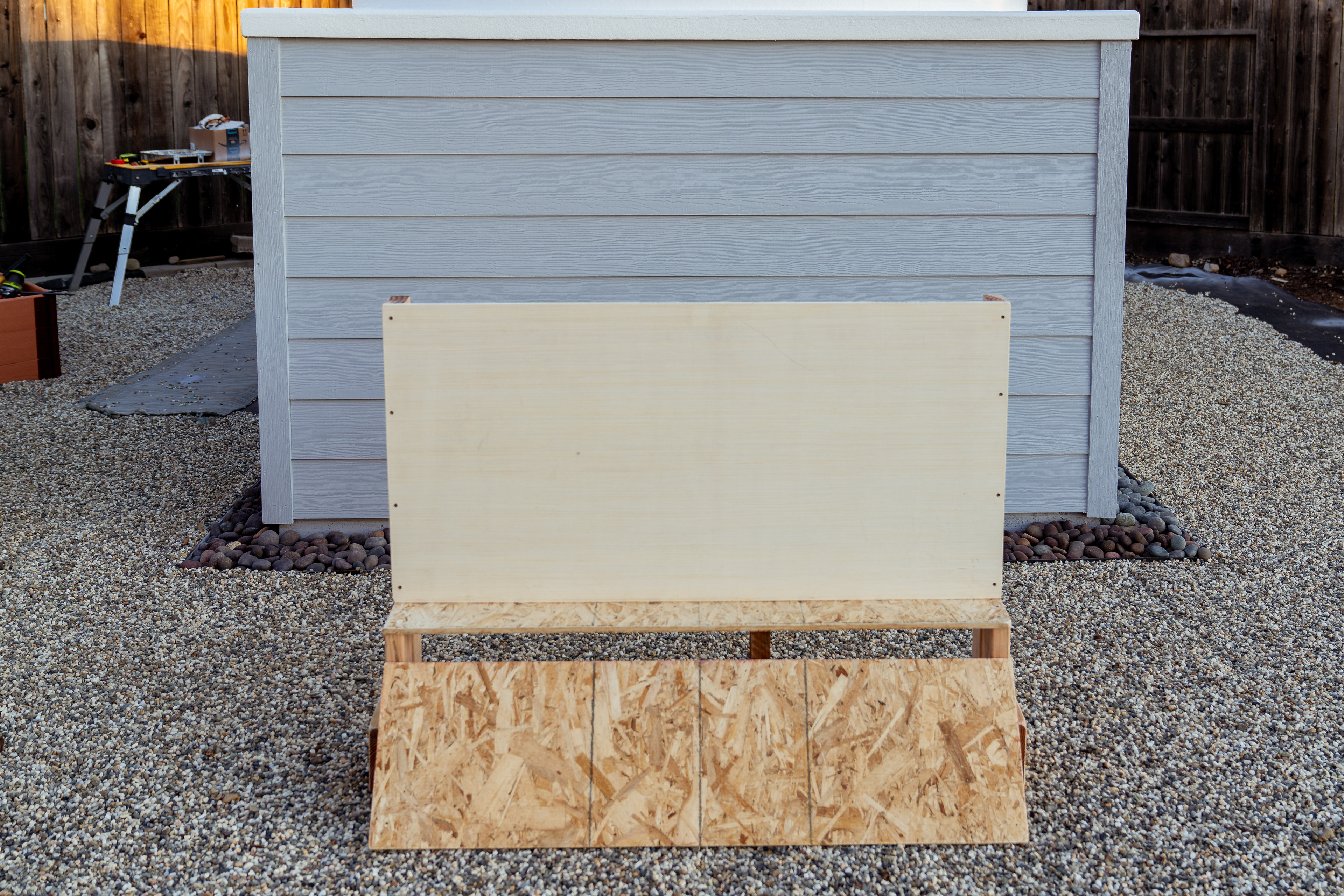
Framed and ready

Another view

Another view

Rear view
ELECTRICAL PANEL ...
Main kit that will power ALL of the astro equipment as well as a 12" GoldenRod dehumidifier and 4 LED shop lights in the dome area if/when I need a lot of light to service any of the equipment:
- 100W x 4 solar panels from Grape Solar
- 40amp solar MPPT charge controller - a very efficient unit from Epever with external monitor
- Breakers at each connection on top of fuses at each solar panel
- 450W power inverter from Xantrex - the unit works, but it's loud and I suspect not very efficient... candidate for future upgrade
- 100ah x 2 sealed lead-acid batteries, wired in parallel for a total of 200ah power bank
Secondary kit that will power both fans, entry LED light, LED strip lights around the perimeter of the observatory:
- 100W x 2 solar panels from Nature Power
- 40amp solar MPPT charge controller - a very efficient unit from Epever with external monitor
- Breakers at each connection on top of fuses at each solar panel
- 350W power inverter from Nature Power - the unit is tiny and looks cheap but seems to work fine
- 50ah x 2 lead-acid batteries, wired in parallel for a total of 100ah power bank
Both kits have battery bank health and actual 2-way meters installed at the batteries with shunts that can provide charge/discharge state and actual capacity readings. Both kits have extension outlets to accommodate a variety of equipment power adapters. I've done extensive testings of all power consumption and so far I'm barely using half of the minimum I need to generate during the short and cloudy winter days. Some equipment (fans, dehumidifier) have been running non-stop for a few weeks, and I never dropped below 80% on either bank capacity. In short - I'm satisfied with the results :)

Adult supervision...

Ready to roll

Closeup

Closeup
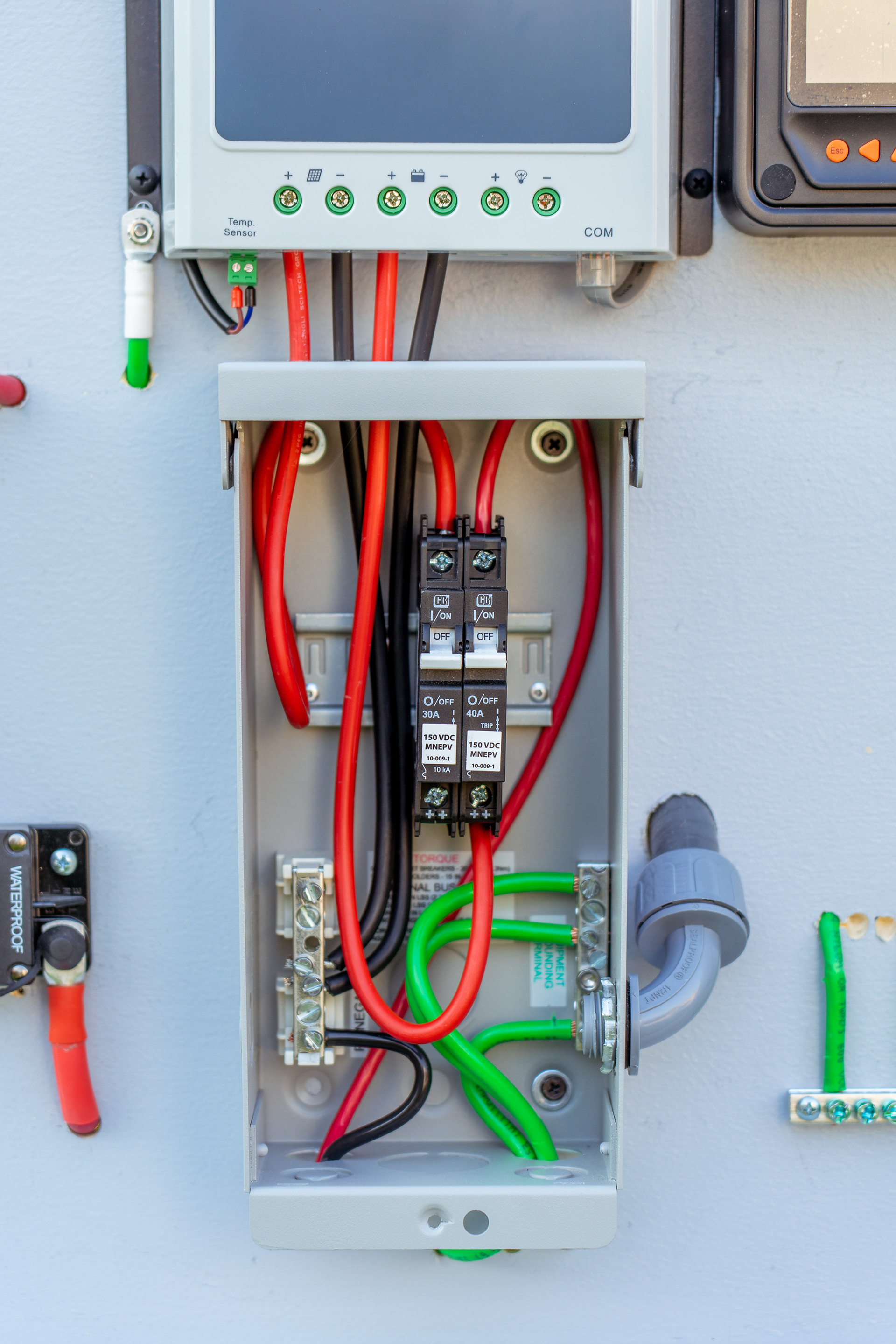
Breaker box

Breaker box

Closeup


